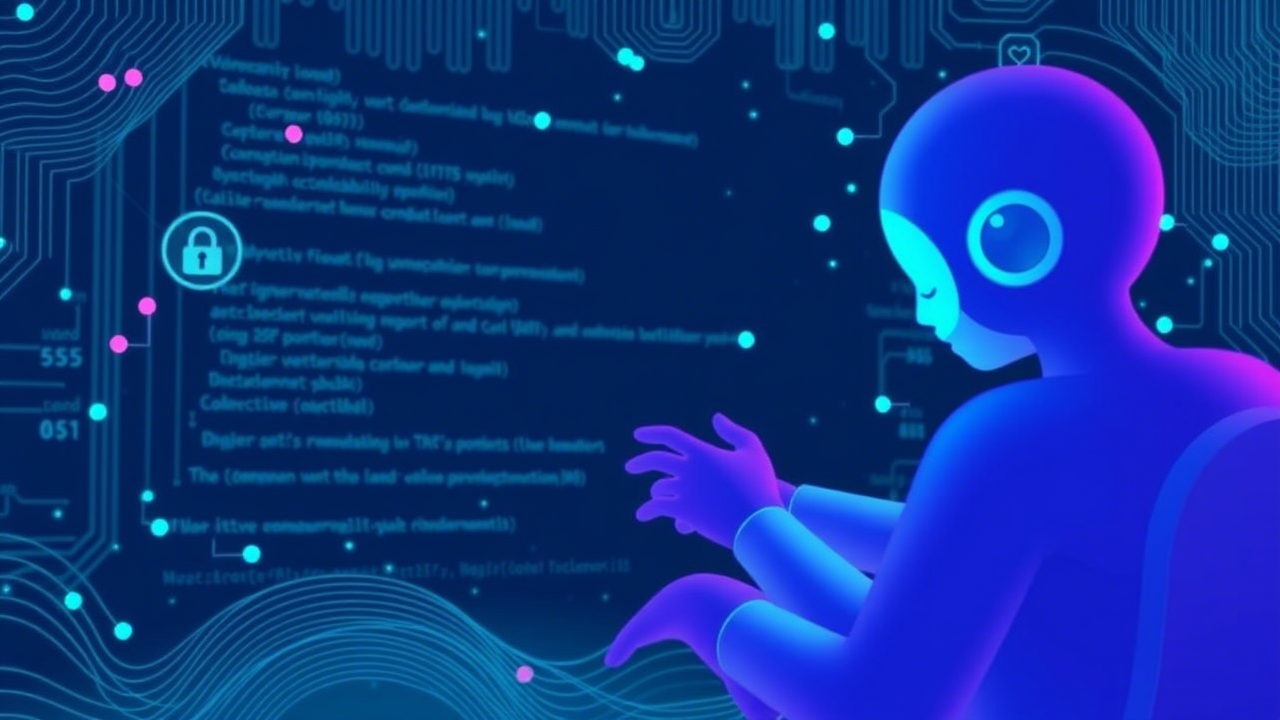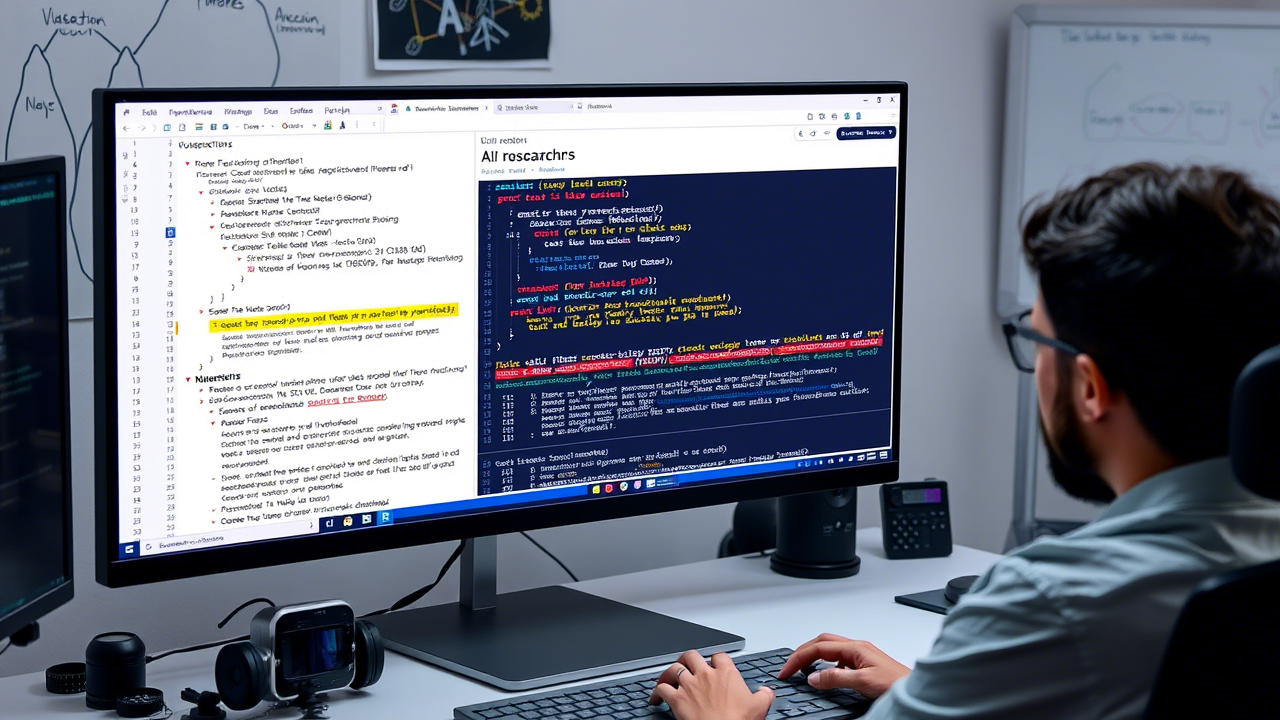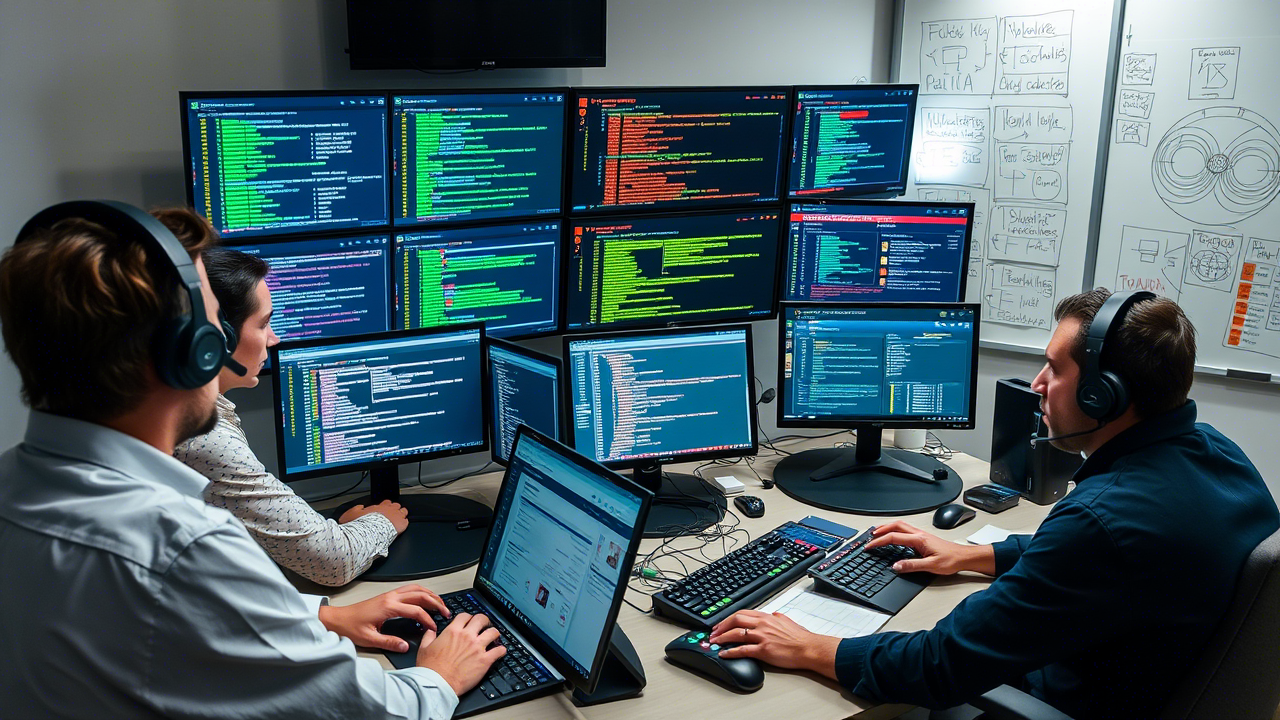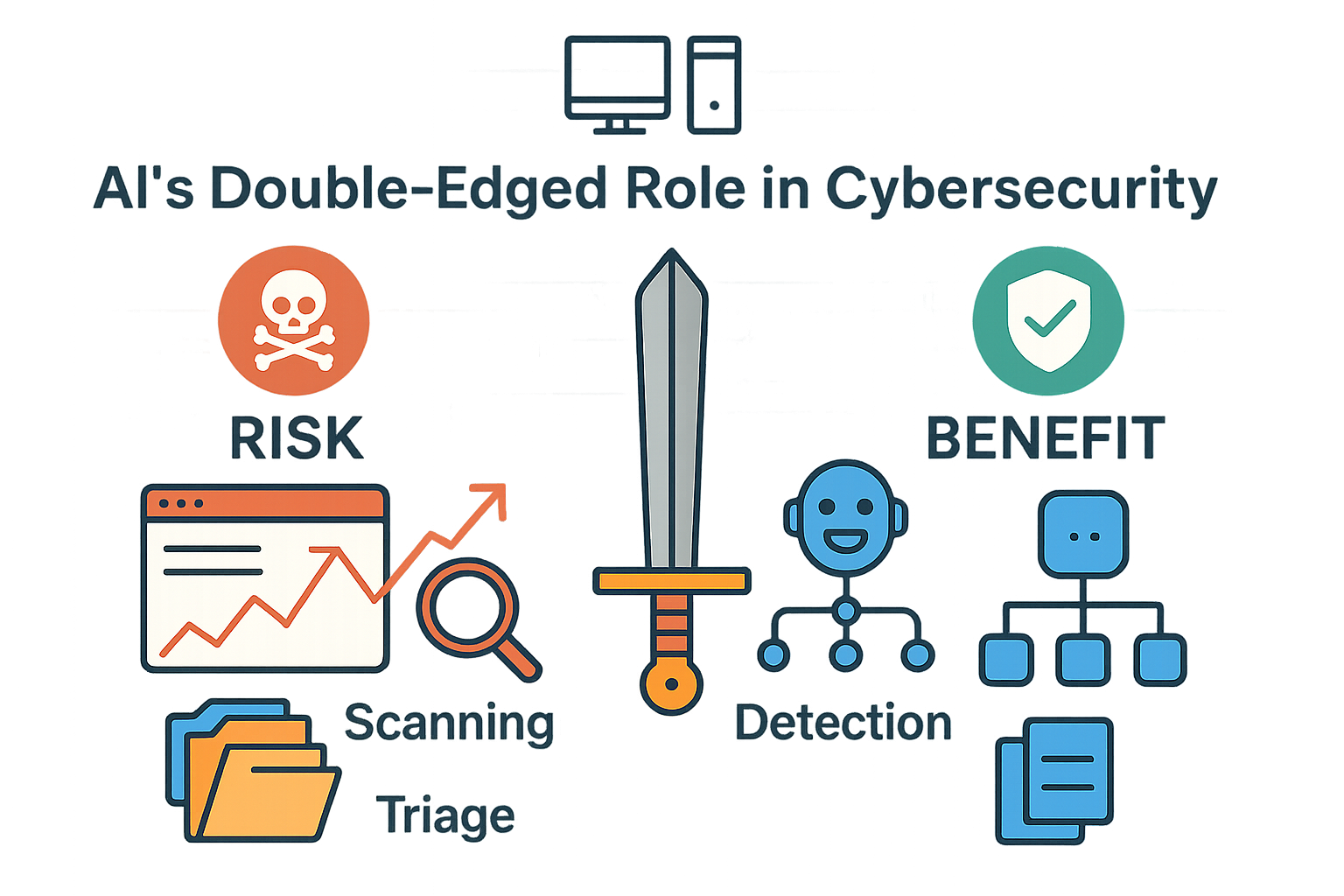
Artificial intelligence is changing the world rapidly, often for improvement and sometimes for more harm. As cybersecurity advances, we’re beginning to recognize two sides to the coin. Bug bounty programs, which were once relying on expert ethical hackers to discover vulnerabilities in software, are now faced with the challenge of a different kind with a flood of AI-generated vulnerabilities.
At first, this could appear as if it’s progress. The more bugs reported, the more bugs discovered, isn’t it? It’s not so. The majority of these reports created using AI appear polished, but they are usually filled with errors or, even worse, totally fabricated. This is causing a huge challenge for people who are at the forefront in security-related triage.
Let’s look at the latest developments, what’s happening, how the cybersecurity world is responding, and what function AI app development tools can help in turning the tide.
The Rise of AI in Bug Bounty Submissions

Bug bounty platforms such as HackerOne, Bugcrowd, and Open Bug Bounty were built with a basic idea in mind of tapping into the world’s hacker community to find weaknesses in security that the internal team could overlook. This is crowdsourced security, and it’s effective until the crowd becomes overwhelmed with bots.
With the availability of large-language models (LLMs) such as ChatGPT, anyone can produce what appears to be a genuine vulnerability report. The reports generated by AI typically contain technical terms, code fragments, descriptions of exploits, and fake proofs of concept.
The problem is that many of them are just nonsense.
Since AI tools can create the content in a mass way, the triage team is confronted with a plethora of information, most of which isn’t practical or even relevant.
The Curl Heap Overflow Incident
Some of the more famous instances of AI not working correctly in this area are from the open-source world.
Daniel Stenberg, the creator of the popular Curl project, was notified of an alert that there was a heap overload in the codebase. After further examination and analyzing the report, he realized that the vulnerability report was referring to an operation that did not exist.
According to Stenberg’s own words, the information had been “clearly generated by ChatGPT or something similar” and was “just plain wrong.”
The issue wasn’t just a nuisance; it was also a drain on time. Much like many maintainers who work on open source, Stenberg doesn’t have hours spent chasing up fake bugs. Yet, the AI-generated sound is forcing a lot of security and development professionals to take on the task.
Triage Teams Under Pressure

To fully comprehend the scope of the issue, let’s examine the facts.
The Apache Software Foundation (ASF) is a nonprofit organization that oversees over 350 open-source software projects and said it had received 22,600 security-related email messages within a year. After removing the noise of automation, spam, or irrelevant messages, just 2.3 percent of them were genuine security concerns that merited investigation.
It’s an astonishing signal-to-noise ratio, and AI is only making more noise.
Making these reports more accurate requires humans to work. Even when reports are obviously fake, someone needs to be able to comprehend it, read the message, check it out, and react. Take the thousands of reports that are not as good, and you begin to understand how serious vulnerabilities can get missed.
How Bug Bounty Platforms Are Fighting Back

Despite the flurry of trash submissions, bug bounty platforms haven’t gotten too worried, at least not right now.
The Director of Technical Services, Sandeep Singh, is aware of the trend; however, he notes that the number of false reports isn’t exploding—as of yet. It’s due in large part to the robust processes they have in place internally.
The platforms that are responding:
- The strictest of triage procedures: Each report is screened manually prior to it reaching an individual client.
- Reputation system The repeat offenders who provide fake or poor-quality reports could get their reputation ruined or even be banned completely.
- Automation improvements: AI is also being utilized behind the scenes to identify and block junk submissions or ones that are low in value.
This is an example of the classic case of “fighting fire with fire.” If AI could create fake vulnerabilities, AI may also be able to detect and eliminate the fake vulnerabilities.
AI’s Double-Edged Role in Cybersecurity

We’ll be honest: AI isn’t the only thing that’s at play in this case. Much like other technologies, AI is an instrument, and how we utilize it will determine whether it benefits or harms.
There are some who are using LLMs to play bug bounty websites. However, AI has also transformed cybersecurity in thrilling ways.
- Artificial intelligence (AI) detects threats and is able to detect suspicious behavior more quickly than a human.
- Intelligent scanning using machine learning: Machine learning is able to identify and prioritize security vulnerabilities better than traditional techniques.
- Smart triage NLP models can be utilized to categorize, summarize, and distribute vulnerability information with the least amount of human effort.
The issue isn’t AI in itself, but rather the untainted use of AI. If users copy and paste the descriptions of vulnerabilities generated by AI without verifying them, they’re saturating the system with noise. However, when utilized properly, AI can actually improve security management.
Why Human Oversight Still Matters
The Curl incident teaches us that something is important: no matter how sophisticated AI is, there’s still nothing that can replace human experience regarding security.
Experts in security have an element that AI isn’t able to do: context. They know how real-world systems behave, are able to discern edges, and know how to verify vulnerabilities. They are able to spot the false positive in only a single code analysis, something that even the most sophisticated AI software might not be able to detect.
The future of security won’t be AI against humans; it’s AI working with humans.
Consider AI as your enthusiastic employee. It is able to do lots of the mundane work, but it requires an experienced engineer to oversee it, verify it, and lead it.
Best Practices for Managing AI-Generated Reports
How can we stem the flurry of AI garbage while benefiting from the security of AI?
These are the best methods that security and platform teams need to take into consideration:
1. Use AI to Fight AI
Machine learning models can be deployed that automatically identify
- Repetitive language patterns
- Unrealistic exploit scenarios
- The inconsistencies between code reference and repositories in use
2. Tighten Submission Guidelines
It is important to define what constitutes an authentic report. Get:
- Proof-of-concept codes
- Version numbers
- Steps for reproducibility
- Assessment of the impact
It’s the only way to eliminate the low-effort AI-generated spam.
3. Enhance Reputation Systems
Recognize accurate and actionable reports that have greater quality and speedier review. For low-quality reports, penalize repeat submissions.
This prevents shotgun-style AI reporting and encourages hacking that is ethical.
4. Provide Education
Give bounty hunters training about what to avoid using AI tools. Instruct them to verify the AI-generated content prior to making submissions.
5. Invest in Secure AI App Development
Security teams need to collaborate together with AI app development company to develop reliable tools that are tailored to their requirements. These tools can:
- Securely incorporate LLMs into their workflow.
- Maintain data privacy
- Provide reliable and consistent output, backed by proper security measures.
How AI App Development Services Can Help
That’s where our experienced AI teams of developers can help. Firms that provide AI app development can develop custom security solutions that allow AI to be a part of, rather than against, the bug bounty effort.
Here’s how:
- Custom-made LLMs instead of general-purpose models, such as ChatGPT: Developers can develop models based on specific validated vulnerabilities to minimize hallucinations.
- Artificial intelligence-assisted triage robots The bots are able to instantly analyse reports that come in, classify them, and then assign the highest priority.
- Context-aware automation: Through incorporating specific knowledge about codebases, these tools are able to determine whether the vulnerability is actually living software.
- Secure integrations: Service providers can make sure that the AI software is operating within strict standards of compliance and safeguard confidential project information.
In the simplest terms, AI app development services provide a means to control the chaos and use AI’s power in a responsible manner.
A More Secure, AI-Powered Future
AI will not go away. It’s actually likely to be more involved in the cybersecurity process. One of the biggest challenges ahead is to ensure that innovation is balanced with respect.
It is possible to expect
- Smarter bug bounty platforms that incorporate AI filters as well as smart triage technology
- Higher standards and guidelines for submission in order to limit noise
- Intelligent tools are developed in partnership with AI developers of apps.
- A greater emphasis should be placed on cooperation between AI instruments and human scientists.
If we take a balanced and cautious approach, we will make sure that AI improves our security instead of weakening it.
Final Thoughts
The raging flood of AI-generated vulnerability reports may be an issue right now, but it’s actually an opportunity to wake up.
AI is able to enhance security. However, it can only do this with human supervision as well as smarter technology and responsible use. When bug bounty programs develop and grow, they’ll have to adjust their processes, tools, and practices to manage the AI increase while keeping in mind the things that matter most: genuine and actionable security information.
Investing in AI apps as well as strengthening triage systems as well as educating the hacker community on ethical issues to build an environment for bug bounty, which thrives in this day of AI, regardless of how crowded it is.
Read More: zynexi







